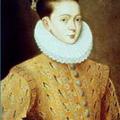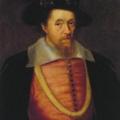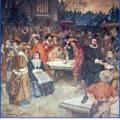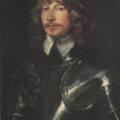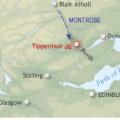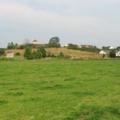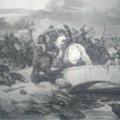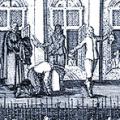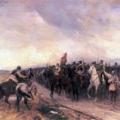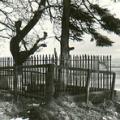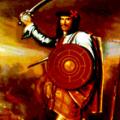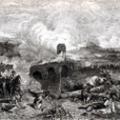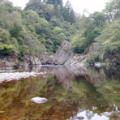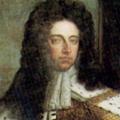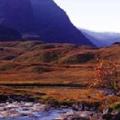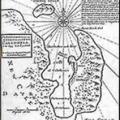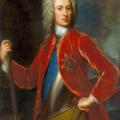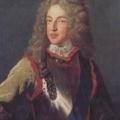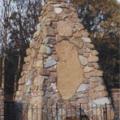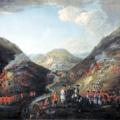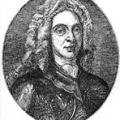Categories
Most Liked
Posted on July 17, 2013
by Amanda Moffet
by Amanda Moffet
Posted on May 12, 2013
by Chas Mac Donald
by Chas Mac Donald
Posted on August 29, 2013
by Amanda Moffet
by Amanda Moffet
Posted on February 6, 2013 by Donald | 1 views | comments
In 1581, Esmé Stewart was created Earl of Lennox.
He was in support of Queen Mary and acknowledged Catholic concerns at a time when the Reformation was well established in Scotland. The Presbyterians believed Lennox to be an agent for the Counter-Reformation and a Catholic spy.
Although both the ...
Posted on February 6, 2013 by Donald | 1 views | comments
The son of Mary, Queen of Scots, and Lord Darnley became King of Scotland upon his mother’s forced abdication in 1567.
He was thirteen months old at his coronation and brought up by extremely manipulative individuals. He successfully stopped the draw of power away from his position by the Calvini...
Posted on February 6, 2013 by Donald | 0 views | comments
Charles I’s views of himself, theology and politics became increasingly contradictory to the beliefs of the Presbyterians. Charles tried to bring together the laws and churches of Scotland and England, with all roads leading to himself.
In 1637 he produced the Book of Common Prayer, written witho...
Posted on February 6, 2013 by Donald | 0 views | comments
James Graham, 5th Earl and later 1st Marquis of Montrose, was born in 1612 and studied at St Andrew’s University.
In 1638 he contributed to the National Covenant, and fought for the Covenant in the Bishops’ Wars. As the country moved into ever more turbulent times, Montrose’s sympathies moved bac...
Posted on February 6, 2013 by Donald | 2 views | comments
In the August of 1644 James Graham, 1st Marquis of Montrose, combined his force of cavalry and Highland foot soldiers with Alasdair MacDonald's Irish soldiers to begin a campaign against the Covenanters for Charles I.
Their first target for reclamation was Perth, and on the 1st September they arr...
Posted on February 6, 2013 by Donald | 0 views | comments
Under James Graham, the Marquis of Montrose, the Royalist army had achieved success at Inverlochy and Dundee.
He made camp with his 1750 men and 250 horses at Auldearn, around three miles to the east of Nairn. The Covenanters were marching through the night from Inverness to fight him.
Sir John ...
Posted on February 6, 2013 by Donald | 1 views | comments
On Philiphaugh a fray began
At Hairhead wood it ended;
The Scots out o'er the Graemes, they ran,
See merrily they bended.
Sir David frae the Border came,
Wi' heart an' hand came he;
Wi' him three thousand bonny Scots,
To bear him company.
Traditional Border Ballad
The Marquis of Montrose had co...
Posted on February 6, 2013 by Donald | 0 views | comments
Civil War had begun in earnest by 1642. Charles I was the enemy of the Presbyterians in Scotland and the parliamentarians in England.
His lack of ability at negotiation and conciliation had compounded his situation. Montrose had done well for him in undermining the Calvinists and Campbells for a ...
Posted on February 6, 2013 by Donald | 2 views | comments
The Calvinists were in support of Charles II when he became King and signed both the Covenants in 1649. Cromwell, however, was not. With sixteen thousand men he invaded Scotland in July and headed for Edinburgh, expecting to rendezvous with his supply ships at Leith. David Leslie and the Scots arm...
Posted on February 6, 2013 by Donald | 1 views | comments
The covenanting ministers who rejected the Restoration settlement with Charles II’s additions, found themselves replaced by curates and without a living.
The congregations had their own opinions, of course, and some, who became known as ‘Conventiclers’, regrouped to practice the Covenant with the...
Posted on February 6, 2013 by Donald | 2 views | comments
Born in 1671 at Loch Katrine, the third son of a Lieutenant-Colonel, MacGregor’s inherited long arms and great strength gave him abilities with the broadsword that made his name known to many. He fought at Killiecrankie for Viscount Dundee in 1689 before joining the Lennox Watch.
When the name Ma...
Posted on February 6, 2013 by Donald | 0 views | comments
Following success against the military at the recent Battle of Drumclog, the Conventiclers’ support had swollen to six thousand when they came together at Hamilton in June 1679.
Differences between Covenanters which had undermined them through the 1650s, again created factions among their numbers...
Posted on February 6, 2013 by Donald | 2 views | comments
Near Pitlochry in Perthshire is the Pass of Killiecrankie, a gorge with a six feet wide riverside track.
News came to Jacobite leader Viscount Dundee, John Graham of Claverhouse, that General Hugh MacKay would be moving his men from Stirling to Blair Castle. Dundee, known by his supporters as Bon...
Posted on February 6, 2013 by Donald | 0 views | comments
James had converted from Protestantism to Catholicism in 1668 whilst his brother Charles II was monarch. When the King too converted and tried to re-install Catholicism among his subjects around 1672, there was outrage. Acts were passed in Parliament, such as the Test Act, so only Anglicans could ...
Posted on February 6, 2013 by Donald | 1 views | comments
While the other MacDonald clans suffered through the 1500s, the MacDonalds of Glencoe survived notably well. Perhaps their greatest protection was their home environment acting like a natural fortress. They certainly never found the need to build one. Also only the strongest of people could develo...
Posted on February 6, 2013 by Donald | 0 views | comments
For twenty years the London East India Company had enjoyed soaring success, bringing incredible fortunes to its stockholders through its virtual monopoly of Eastern trade.
By 1695 competitors in the market were using every scandalous technique to have Bills in their favour passed in England’s Par...
Posted on February 6, 2013 by Donald | 2 views | comments
The crowns of Scotland and England had become one in 1603 and Cromwell had tried to bind the countries’ political systems together fifty years later, but Scotland still wanted to govern its own religious, financial and political affairs.
The eighteenth century began for Scotland with financial ru...
Posted on February 6, 2013 by Donald | 0 views | comments
Thanks to the treatment of Scotland before and after the 1707 Union, there was always strong underground support for the reinstatement of the exiled Stewarts to the throne.
Events following the death of Queen Anne in 1714 brought emotions to a level where the man who would lead government forces,...
Posted on February 6, 2013 by Donald | 1 views | comments
On the 6 September 1715, the 6th Earl of Mar, John Erskine, declared himself for James Francis Edward Stewart, the Old Pretender, and left Braemar carrying the Stewart standard to head south to the Jacobites in England. By the end of the month he had taken over Inverness with twelve thousand men b...
Posted on February 6, 2013 by Donald | 1 views | comments
The first Rising had failed by 1716, though skirmishes would continue.
1719 saw what was known as the "little Rising". The only battle of this Rising occurred between a government army led by General Wightman and Jacobites under the 10th Earl Marischal at Glenshiel.
The Jacobite cause was suppo...
Posted on February 6, 2013 by Donald | 1 views | comments
The man credited in the National Anthem with the ability to frustrate and crush rebellious Scots is also the man who brought the first proper roads to the Highlands.
Major-General George Wade was Commander-in-Chief of North Britain from 1724 until 1740, during which time he had military routes ac...
Featured Articles
Most Discussed
Posted on July 16, 2013
by Amanda Moffet
by Amanda Moffet
Posted on February 6, 2013
by Donald
by Donald
Posted on July 17, 2013
by Amanda Moffet
by Amanda Moffet


 View More
View More View Less
View Less